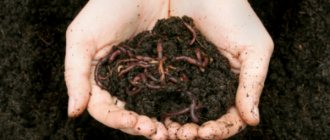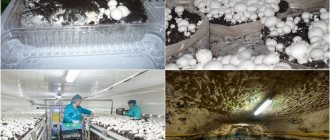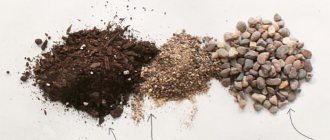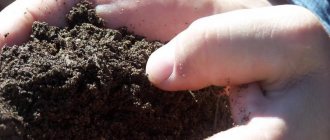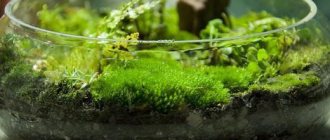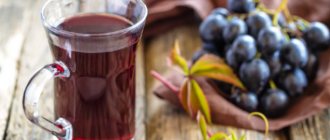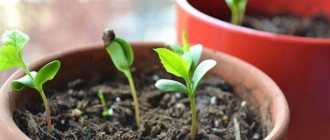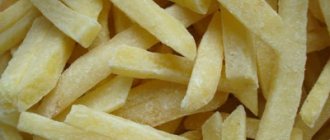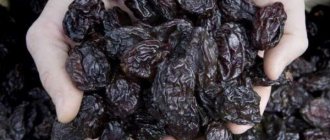Components
Champignons need a nutrient substrate prepared taking into account their needs. Garden soil is not suitable for mushrooms. Air parameters (humidity, temperature) are maintained for them. They do not have chlorophyll, which powers photosynthesis. The mycelium grows only due to the nutrient substrate. Therefore, they do not need lighting. Mushrooms are cared for so that they receive all the substances as in nature.
The nutritional mixture is prepared according to several recipes. All contain the following components:
- nitrogen sources – animal waste;
- sources of carbohydrates – dry plant stems;
- sources of nitrogen and carbon – grain waste, elements of alcohol production.
Exact adherence to proportions will give the correct compost. It will contain polysaccharides, proteins, and mineral supplements.
Conditions for growing mushrooms
For a high yield on a mushroom plantation, it is necessary to prepare the correct nutrient medium.
Did you know? Champignons are recommended as a means of getting rid of excess cholesterol, as they contain substances that cause the breakdown of cholesterol plaques.
Its structure should be sufficiently fibrous and include the following substances (average values for dry weight):
- 2% nitrogen;
- 1.5% potassium and phosphorus;
- up to 4% calcium.
The mixture should not contain more than 0.1% ammonia, and its acidity should be maintained within 7.3–7.5 pH. It is necessary to control a constant humidity of 65–70%.
Maintaining a balance of nutrients is the key to obtaining a mixture on which you can grow a good crop. Too nutritious compost will lead to an increase in temperature during the growth period of the mycelium, and the champignons will not grow well.
Find out what equipment is required to grow mushrooms.
Important conditions for growing champignons are also:
- temperature for mycelium formation is within +23…+25°C, and for mushroom growth +15…+17°C;
- well ventilated room, without drafts;
- humidity 75–85%.
Mushrooms do not require special lighting, so most often they are bred in basements, where it is easy to obtain the environmental parameters listed above. The room should also have a concrete rather than earthen floor. Champignons are also grown in greenhouses, artificially shading them from the sun, and sometimes in beds in shady areas of the site.
Video: growing champignons
Nitrogen sources
Nitrogen is present in the following animal wastes:
- horses and cows;
- pig, sheep or rabbit;
- bird droppings.
They must be taken fresh, since over time the number of microorganisms in them decreases. More suitable trace elements in horse manure. It was with him that the artificial cultivation of crops began. In nature, mushrooms still grow well on the waste of this animal. It contains a lot of nitrogen, phosphorus, calcium and potassium. In addition to them, there are trace elements - Mn, Co, Cu, Mo.
If we take into account the proportion of the remaining components of the substrate and horse cakes, they contain ¼ of all the nutrients for the mycelium.
It is horse cakes that have a high ability to generate heat. This is due to the high level of myxobacteria and actinomycetes. Under their influence, organic substances decompose and nitrogen compounds and ash substances remain. These components are necessary for the growth and development of the body of champignons. It is important that horses eat hay rather than fresh grass.
Neomycots, which include champignons, do not know how to build proteins from simple compounds, like plants with chlorophyll.
Nowadays horses are rarely used for transportation and in agriculture. Therefore, it is not always possible to get their waste. Horse cakes are replaced with cow cakes. In this case, the manure is additionally enriched with nitrogen.
The Leninsky State Farm has been producing compost from pig manure and wheat straw for a long time. The number of mushrooms on it did not exceed 12 kg m2. even in the conditions of modern champignon farming. Therefore, it is not entirely suitable for obtaining large yields.
Sources of carbohydrates
Agricultural waste suitable for champignons:
- corn cobs;
- reed stems;
- cereal plants.
Straw is made from the stems of cereal plants. Wheat, barley and rye straw differs in its structure and nutritional value. Therefore, these species are often chosen for mushroom substrate. Instead, some gardeners use fallen leaves and dry grass from the garden. To make it rot better, it is crushed in a feed crusher. Leaves, small branches, and grass are crushed in the same way. The main requirement for raw materials is the absence of rot and other infections.
Sources of nitrogen and carbon
The following foods are rich in nutrients:
- gypsum;
- soybean flour;
- malt;
- pea flour;
- crushed bones.
One of the permanent elements of the substrate is gypsum. This is an inorganic substance that accelerates ripening. You can add malt to any compost. It is calculated based on the norm of 8 kg per 1 ton of substrate.
There are many nutrients for champignons in sawdust. There is a lot of phosphorus, calcium, nitrogen and potassium. Their humidity should be at 50%. They allow air to pass through well and can absorb a lot of liquid. By increasing the looseness of the substrate, sawdust accelerates decomposition.
Recycled water
The last component is recycled water (saturated with nitrogen due to the method of its production). This is excess water that drains from the straw and compost during the soaking stage and after beating when the compost is further moistened.
Recycled water absorbs all the nutrients that straw and chicken manure release, thereby helping to reintroduce them so that the quality of the compost is always at the highest level.
So we went through all the ingredients and components of our compost. As you can see, when preparing compost for champignons, only natural ingredients and no chemicals are used. After all, our common ultimate goal is to grow an environmentally friendly product - champignon mushroom.
Recipes
The most popular way to make compost is from horse manure, cereal stalks and gypsum. They take 100 kg of scrap and the same amount of horse cakes. Additional components are required in smaller volumes: eight kg of gypsum, five kg of chalk and urea, two kg of superphosphate.
This amount will yield up to 300 kg of fertilizer. To make a ton of compost, several times more ingredients are taken. After decomposition, it decreases by almost a third.
The fermentation process proceeds better in a heap weighing about 2 tons.
The second recipe includes: 1 ton of straw, 300 kg of bird droppings and cow waste, 80 kg of limestone with gypsum and 50 kg of urea. Another way is to prepare a substrate from broiler droppings. This requires 1 ton of bird waste, 1 ton of dry plant stems, 600 kg of alabaster, and a large supply of water.
Recipe with corn
In regions where corn is grown, the cobs are placed in the compost. They take 500 kg of cobs and the same number of kg of cereal stalks, 600 kg of chicken droppings, 60 kg of alabaster and 2 tons of water. Sheep manure is used on sheep farms. It is mixed with 500 kg of straw, 300 kg of chicken manure, 30 kg of gypsum and water. The manure itself requires 200 kg.
Alfalfa straw and sawdust
A recipe made from dry chopped alfalfa is also popular. It includes 100 kg of dry grass, 100 kg of corn, 100 kg of broiler litter. Gypsum is added there in the amount of 4.5 kg and 400 liters of water. A recipe with sawdust is often used. For the nutrient mixture you need 500 kg of sawdust, 500 kg of wheat straw, 50 kg of calcium carbonate, 3 kg of waste slag and 15 kg of malt. The recipe also includes 5 kg of urea.
Recipe with peat
In places with large deposits of peat, it is also placed in a mushroom substrate. Take 100 kg of rye straw, 400 kg of peat flour and mix. Prepare a solution of salts:
- 3.5 kg ammonium sulfate;
- 0.7 kg of potassium phosphate;
- 0.7 kg sodium nitrate.
The mixture with peat is watered with saline solution and sprayed with a 2% urea solution. All components are mixed and moistened.
Asian recipe
In the east, mushrooms are grown on rice straw. In addition to this, chalk 30 kg, ammonium sulfate 20 kg, superphosphate 20 kg, urea 5 kg are added to the mixture.
Types of compost for growing champignons
When growing mushrooms, a variety of nutrient mixtures are used, so it is difficult for an ordinary gardener to make a choice. There are 3 common types of compost.
With natural ingredients
Compost necessarily contains natural components. They are rich in chemical elements:
- nitrogen - found in livestock waste;
- carbohydrates - found in dry plant stems;
- carbons - found in gypsum and chalk, soy, pea and bone meal, malt.
In the wild, mushrooms grow well where horses graze. Horse manure is considered the most suitable source of nitrogen for making compost. It contains a significant amount of microelements.
The ingredient is replaced (usually diluted) with manure from cows, sheep, rabbits and pigs, and bird droppings.
Straw, corn cobs and hay serve as a carbon component - they provide aeration. Poor air flow into the compost contributes to a significant reduction in the efficiency of the mixture.
Gypsum materials are laid in the smallest quantities. They improve the structure of the substrate, saturating it with natural minerals.
The basic composition of natural compost for mushrooms:
- 100 kg of horse manure;
- 15 kg of dry bird droppings;
- 50 kg of straw;
- 3 kg of crumbly alabaster;
- 100 liters of warm water.
Approximate aging time is 23 days. The consistency of the finished product is loose and homogeneous, the color is dark brown. Feature: when squeezed in the palm of your hand, the mass should not stick together and release liquid.
Semi-synthetic
Horse breeding is not on a large scale. Consequently, it is impossible to find horse manure in the required quantity. The way out of the situation was the production of semi-synthetic composts for growing champignons.
An alternative technique includes several composition options (part of the waste product of horses is replaced with another material):
- horse manure - 50 kg, chicken manure - 15 kg, straw - 50 kg, gypsum - 3 kg, water - 200 l;
- horse waste - 50 kg, droppings - 75 kg, cereal stalks - 250 kg, construction gypsum - 15 kg, water - 250 l;
- straw type manure - 250 kg, dry chicken excrement - 75 kg, straw - 250 kg, gypsum - 15 kg, water - 1000 l.
Synthetic
This type of compost does not contain horse manure, which reduces the cost of material. The synthetic substrate contains straw, chicken manure and minerals (urea, ammonium sulfate, Superphosphate, etc.).
Standard step-by-step recipe:
- Fill 500 kg of straw with any slurry so that you get a slurry;
- after 3 days, add 250 kg of bird droppings and another 500 kg of straw;
- add urea (25 kg);
- enter Superphosphate (3.17 kg);
- on the first and third interruptions, add chalk (8 kg) and plaster (12 kg).
After 4 turnings, the compost is ready. This takes 25–27 days.
Place
Compost will be correct if it is prepared under suitable conditions. Fermentation occurs if it is not in contact with the ground. Therefore, they choose a concreted area or cover the ground with roofing felt or cellophane. To break up the heap there must be free space: the width of the area is at least 2 m, and the length is arbitrary.
A second platform for soaking straw is also being prepared. The substrate is covered with a canopy to protect it from sunlight and rain. It also protects the pile from drying out in the heat. Air should flow freely to the compost from the sides. It is fenced with wooden sides up to 50 cm high or an alabaster roller. Pre-prepare a watering hose or watering can.
In the open air, the substrate is prepared if the temperature does not drop below 10⁰ C. Such indicators are recorded from mid-April to November. In southern latitudes, outdoor compost will mature from March to December.
The substrate can be made not only on the site, but also in a container. A bag, container, or barrel is suitable for this.
Stages
The nutritional mixture is prepared in the following sequence:
- The straw is cut into 15 cm pieces.
- Fill it with water and leave for 3 days.
- Mix urea, superphosphate, gypsum and chalk until smooth.
- Place hay in a pre-selected place and moisten it with water.
- A dry mixture of fertilizers is scattered on top.
- Spread the manure and also sprinkle it with dry additives.
In total, the compost heap should have 4 layers of straw and the same amount of manure. The result is a stack 1.5 m wide and up to 2 m high. After 5 days, bacteria begin to decompose organic matter and the temperature in the pile rises to 70 ⁰C. This is the composting process.
After laying, the pile should warm up to 45 ⁰C. Then the process proceeds autonomously and the compost heap will independently maintain the desired temperature. When the temperature in the substrate reaches 70 ⁰C, it is practically not affected by environmental indicators. Compost will ripen even at air temperatures below 10 ⁰C.
The components must be regularly mixed and watered. Usually, beating with a pitchfork is carried out after the 4th day, pouring 3 buckets of water onto the mixture. Depending on the consistency and starting materials, gypsum or chalk is added during mixing. The pile is watered in the morning and again at the end of the day. To ensure that the substrate is well mixed, it is transferred from one place to another, lifting the layers on a fork. Straw and manure residues that have fallen out of the total mass are placed on top.
Moisture in the nutrient substrate should be retained and not flow out onto the ground.
To soak 10 kg of straw, take 40 liters of water. If cow manure is used, additional nitrogen is added. When soaking hay, add 2 kg of urea and 0.5 kg of superphosphate to the water. Such manipulations are performed for 1 month. During this period, up to 400 liters of liquid are consumed per 100 kg of hay. After 3-4 weeks, the substrate is ready for planting mycelium. It will provide food for mushrooms for 7 weeks.
The structure of the compost should be fibrous.
Requirements for the composition and texture of the substrate
The mycelium (mycelium) of champignons should be purchased only from trusted manufacturers - in order to have a guarantee that it will be healthy, sterile and of high quality.
When purchasing mycelium, keep in mind that there are three main varieties of cultivated champignons, which differ in appearance by the color of their caps: white, cream and brown. The first two are usually more productive, but brown champignons are more resistant to temperature/humidity fluctuations and generally to unfavorable environmental conditions.
Mycelium can be grain (sold in plastic bags) and compost (usually in glass jars). The first can be stored for up to six months at a temperature of 0-4°C, the second at the same values for almost a year. Compost mycelium is less productive, but not so sensitive to changes in temperature and humidity.
If you have nowhere to buy mycelium, you can collect it in places where wild champignons grow (you need to take pieces of soil with thin bluish (and therefore young) mycelium, discarding thick yellowish mycelium) or grow it at home yourself. To do this, either fungal spores are sown or isolated from individual pieces of fungal tissue. Wort agar, carrot agar or oat agar are used as a nutrient medium for growing champignons at home.
As for the substrate suitable for champignons, the best option at home would be properly prepared compost based on straw and fresh horse (or, alternatively, cow) manure. As a last resort, manure is replaced with chicken droppings. When preparing this nutrient mixture, it is very important to maintain all proportions and maintain its acidity at a level of 7.3-7.5 pH.
For 100 kg of clean, dry rye or wheat straw without mold, take 40-80 kg of manure, 2 kg of urea, 2 kg of superphosphate, 8 kg of gypsum and 5 kg of chalk. The volume of the substrate prepared from this set of ingredients is precisely designed for the above minimum usable area of 3 sq.m - it will be 200-250 kg.
If bird droppings are used, urea should not be added, because it is initially enriched with nitrogenous compounds.
The composting site must be well ventilated - active heating and ammonia release will occur during the process. It should also be concreted on the floor and protected on top by a canopy - the ripening compost should not be allowed to come into contact with soil or rainwater, because with them, spores of pest fungi can penetrate into the prepared substrate, which will subsequently be very difficult to get rid of.
The straw is soaked in water for 2-3 days (until it starts to “burn”), and then layer-by-layer with manure is folded into a pile. Urea with superphosphate is also added to each layer of wet straw. In the end, there should be at least 3-4 layers of straw and manure each 30-35 cm high.
After laying the pile, you need to water it several times a day - it must remain moist at all times. After a week, the pile is first re-knocked (shaken) - the layers are mixed with a pitchfork, swapping internal and external ones. In total, 4-5 such interruptions should be done with an interval of 3-4 days (not forgetting to moisten the pile during the process).
In total, it will take 20-25 days to prepare the substrate. Its readiness can be determined by the disappearance of the ammonia smell and uniform dark brown color. A ripe, high-quality substrate is moist, soft, loose, does not stick to your hands, is slightly springy, and the straw in it breaks easily.
- How to make compost for growing champignons at home
We reveal the secrets of how to make compost for champignons with your own hands.
The finished substrate is laid out in containers (wooden boxes or bags for indoor growing, or half-meter-deep pits lined with polyethylene when growing in the garden) and lightly compacted. After 2-3 days, when the temperature inside the laid compost drops to 23-25°C, you can begin planting the mycelium.
Planting of grain mycelium is carried out by simply spreading it over the surface of the substrate (at the rate of 500 g per 1 sq.m.) and then covering it with a thin layer of compost. Pieces of compost mycelium (the size of a matchbox) are placed in holes at a depth of 4-5 cm in a checkerboard pattern at a distance of 20 cm from each other and are also covered with substrate.
To obtain compost with the optimal content of all necessary substances, allowing you to grow champignons, there are several variations in its composition. They can be prepared on sunflower husks, with mycelium, and also from sawdust. The main ingredient in the preparation of such a mixture is horse manure.
In this version, mushroom compost contains:
- straw from winter crops – 100 kg;
- dry bird droppings – 30 kg;
- horse manure – 200 kg;
- alabaster – 6 kg;
- water – 200 l.
Semi-synthetic
This composition contains the following ingredients:
- winter straw – 100 kg;
- straw horse manure – 100 kg;
- dry bird droppings – 30 kg;
- gypsum – 6 kg;
- water – 400 l.
Synthetic
This substrate is chemically identical to the mixture using horse waste, but it contains other ingredients, such as:
- straw;
- bird droppings;
- minerals.
Corn cob compost recipe:
- straw – 50 kg;
- corn cobs – 50 kg;
- bird waste – 60 kg;
- gypsum – 3 kg.
The sawdust compost version contains the following ingredients:
- sawdust (except coniferous species) – 100 kg;
- wheat straw – 100 kg;
- calcium carbonate – 10 kg;
- tomasslag – 3 kg;
- malt – 15 kg;
- urea – 5 kg.
The main thing is to take into account the ratio of the necessary substances in the dry composition (nitrogen, phosphorus, potassium). All components of the mushroom substrate must be selected with special attention. Poultry and animal manure should be taken fresh, and sunflower husks, straw, and corn cobs should not contain even slight traces of rot and mold.
According to the rules, the prepared nutrient base for mushrooms has a fibrous structure and a sufficient concentration of proteins and polysaccharides. Compost for cultivating champignons should contain the following chemical elements:
- nitrogen (almost 2%);
- phosphorus and potassium (1.5%);
- calcium (4%).
All components are calculated by dry weight. The humidity level in the nutrient substrate should be in the range of 65-70%. In addition, special attention should be paid to the soil acidity level - it should be in the range of 7.3-7.5, and the ammonia level - up to 0.1%.
Horse manure contains almost 25% organic matter that mushrooms need to grow. But as practice shows, peat compost also gives good results, and it is relatively inexpensive.
This composition has a high ability for self-warming, which is determined by the development of a significant number of beneficial microorganisms, including radiant fungi and myxobacteria. Thanks to them, organic and mineral components decompose, enriching the mass with nitrogen and ash compounds.
Process
The formation of organic fertilizers goes through 3 stages: decomposition, humification, mineralization. When the waste is heated, the substances inside the pile disintegrate. Many nutrient compounds are formed on which fungi and bacteria multiply. Earthworms appear in it, which speed up the processing of fertilizers.
After 5 days, humus begins to form. At this stage, aeration is necessary, since without oxygen the bacteria will die. Air access is ensured by regularly stirring the pile with a pitchfork, and also by leaving its sides uncovered. The next stage is mineralization. During this period, the substances are completely decomposed and are suitable for mycelium growth.
General Tips
Experienced gardeners know that the maturation of mycelium directly depends on the nutrient substrate. If it contains too many minerals and trace elements, the decomposition temperature increases. Because of this, the mushrooms may die. And vice versa, if they are insufficient, they get a low yield.
It is important to determine in time that the compost is ready. The following signs indicate this:
- Brown color of the substrate.
- Moderate humidity.
- Crumbly structure.
- No ammonia smell.
Ideal compost contains about 2% nitrogen, 1% phosphorus and 1.6% potassium. The optimal moisture content of the mass is 70%. The acidity of the medium is 7.5. The proportion of ammonia should not exceed 0.1%.
A handful of compost is squeezed in the palm of your hand - it should not stick together, and droplets of moisture will remain on the skin. If the mushroom soil releases water, mix it and leave it for a few more days. During this time, the excess liquid will evaporate. It is believed that compost that has not fully fermented is better than compost that has not fully fermented.
Fermentation accelerators
The preparation time for the substrate differs depending on the weather and its components. In summer, fermentation occurs faster. In winter, compost rots for more than a month. If the components are not crushed, the pile sits for years. Then biological products are added to it.
You can speed up the fermentation process with the help of bio-destructors - Siyanie, Baikal, Vozrozhdenie.
You can make biodestructors yourself. Experienced gardeners use whey or yeast.
Cycle and yield
The finished compost is placed in a wooden box and placed in a greenhouse or greenhouse. The boxes are placed on a rack. The crop is always kept indoors as our climate is not suitable for outdoor cultivation. In 75 days it is possible to collect 1 harvest, and in a year – up to 4-6 harvests. Such results are achieved only in mushroom farms. With individual cultivation, such productivity is unattainable.
It is more economical to add compost in a group. By teaming up with several people it is easy to reduce the time and resources for its preparation. After collecting mushrooms, it is used for other purposes. From 1 ton of fertilizer, about 600 kg of waste remains. They contain a lot of nutrients and fertilize vegetables and berries.
Suitable conditions for mushrooms are the key to a rich harvest. From 1 sq.m. Compost produces up to 15 kg of mushrooms. If the compost is not prepared according to the specified technology, few champignons will grow and the costs will not be recouped.
Helpful information
Failure to comply with compost production technology will negatively affect the yield, but even following all the advice can lead to a low-quality product. Basic mistakes of newbies:
- Low compost temperature during maturation. The main reason is under- or excess moisture in the compost for growing mushrooms. You can determine the desired level of water content without special instruments: squeeze the substrate in your hand. If water flows out, the compost is over-moistened. It is necessary to loosen the mass by adding about 1% gypsum.
- Fermentation is very slow. The main mistake is failure to comply with the proportions of the constituent components, insufficient chopping of straw (grass, leaves). In such cases, the mass can stand for several months. To speed up the process, add bio-destructors (for example, Baikal, Vozrozhdenie).
- The desire to get the finished product faster. It is important to remember that a completely fermented mass will become an ideal environment for the growth of champignons, and unripe compost will give poor yield.
Related article:
How to quickly and easily grow kombucha yourself: 2 best recipes
Before making compost for champignons with your own hands, you need to study the possible difficulties of the process and eliminate mistakes. Compliance with the rules for preparing the substrate will allow you to get a good income from selling mushrooms.
